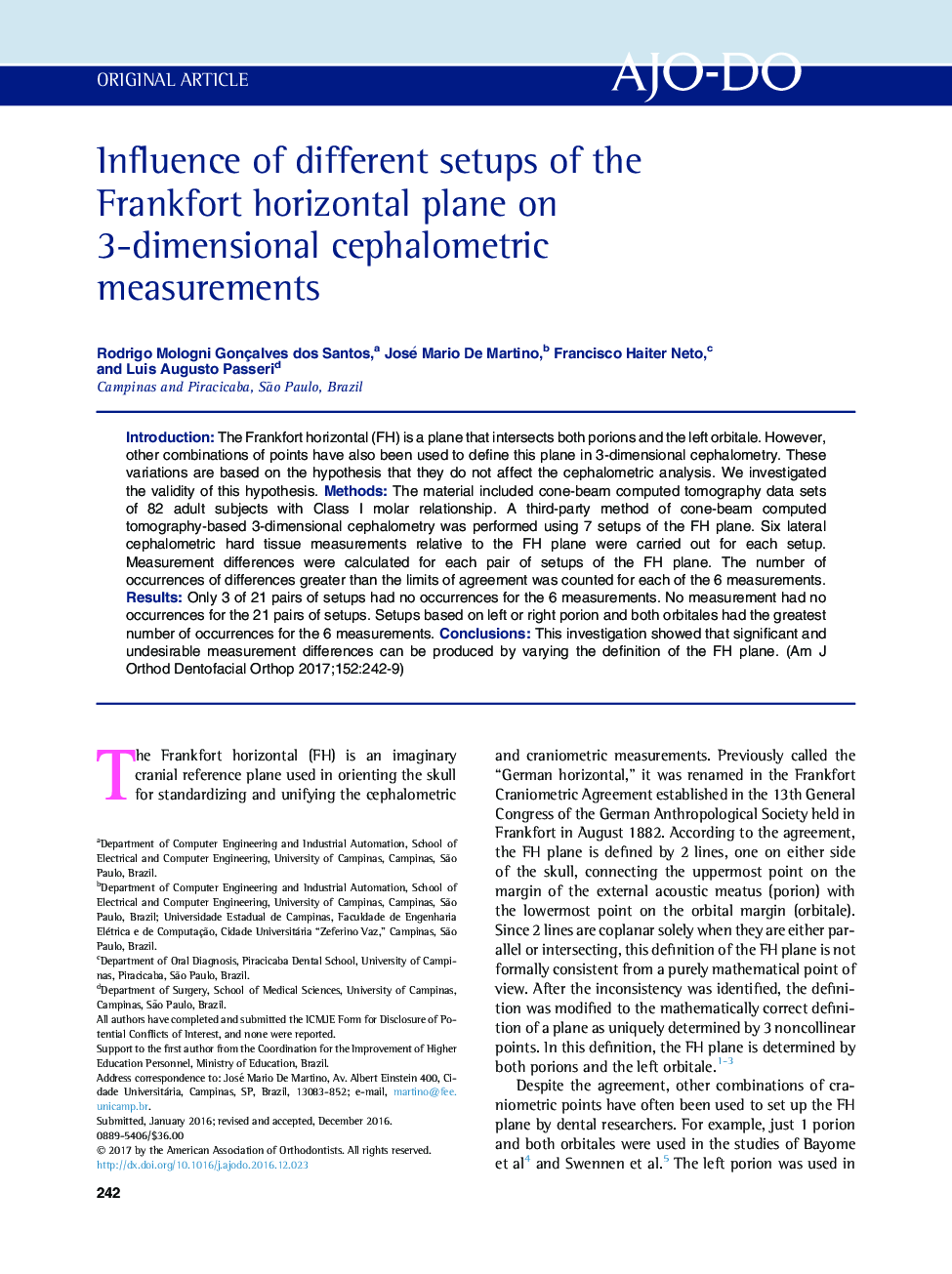| Article ID | Journal | Published Year | Pages | File Type |
|---|---|---|---|---|
| 5637422 | American Journal of Orthodontics and Dentofacial Orthopedics | 2017 | 8 Pages |
â¢Test method shows that different setups of the FH plane affect the cephalometric analysis.â¢Replacing the left orbitale by the right one in the FH plane affects the results.â¢Replacing the right orbitale by the left one in the FH plane affects the results.â¢Replacing the left porion by the right one in the FH plane affects the results.â¢Replacing the right porion by the left one in the FH plane affects the results.
IntroductionThe Frankfort horizontal (FH) is a plane that intersects both porions and the left orbitale. However, other combinations of points have also been used to define this plane in 3-dimensional cephalometry. These variations are based on the hypothesis that they do not affect the cephalometric analysis. We investigated the validity of this hypothesis.MethodsThe material included cone-beam computed tomography data sets of 82 adult subjects with Class I molar relationship. A third-party method of cone-beam computed tomography-based 3-dimensional cephalometry was performed using 7 setups of the FH plane. Six lateral cephalometric hard tissue measurements relative to the FH plane were carried out for each setup. Measurement differences were calculated for each pair of setups of the FH plane. The number of occurrences of differences greater than the limits of agreement was counted for each of the 6 measurements.ResultsOnly 3 of 21 pairs of setups had no occurrences for the 6 measurements. No measurement had no occurrences for the 21 pairs of setups. Setups based on left or right porion and both orbitales had the greatest number of occurrences for the 6 measurements.ConclusionsThis investigation showed that significant and undesirable measurement differences can be produced by varying the definition of the FH plane.
